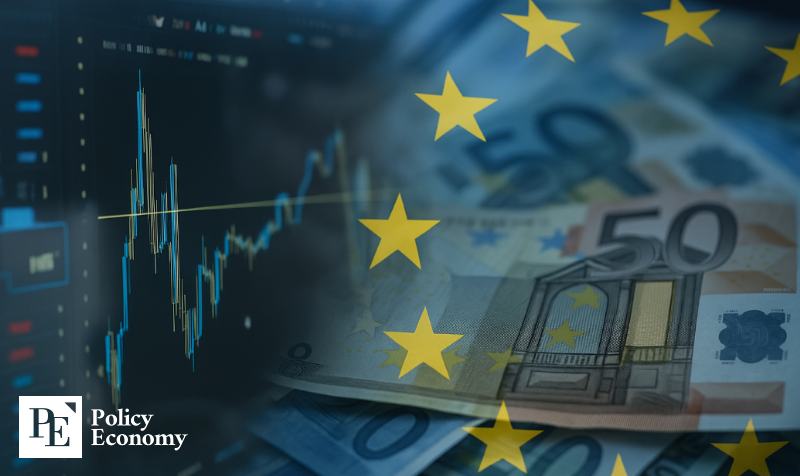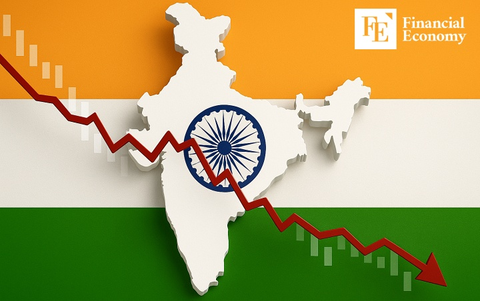Europe Left with Only Regulations and No Investment: Innovation Stagnates, Economic Growth Slows
Input
Changed
Europe’s Lost Engine of Economic Growth Stagnant Innovation Infrastructure Slows Corporate Expansion Lack of Global Tech Giants Hampers Economic Momentum

Once a powerhouse of scientific progress and industrial ingenuity, Europe is now falling behind in the global race for technological and economic dominance. As the United States forges ahead with aggressive investments in innovation and a culture that embraces risk and disruption, Europe finds itself mired in hesitation—held back by chronic underinvestment, overregulation, and a risk-averse mindset that stifles bold entrepreneurship. While American firms scale rapidly and dominate emerging sectors, European companies struggle to grow beyond their early stages. This stagnation is not just a concern for policymakers—it represents a looming crisis that threatens the continent’s future prosperity.
Recent analysis has laid bare the extent of Europe’s decline in technological competitiveness. Despite having access to world-class research institutions and a deep well of talent, Europe is failing to translate its intellectual capital into economic power. The result is an innovation gap that is widening rapidly—one that leaves Europe increasingly vulnerable in an era where knowledge, speed, and scalability define global influence.
A Widening Gap with the United States
Nowhere is this divide more apparent than in the startup ecosystem. The United States has become a dominant force in nurturing so-called unicorn companies—privately held startups valued at over USD 1 billion. As of April 2025, the U.S. had 702 such firms with a staggering total valuation of around USD 3.2 trillion. Europe, despite its size and resources, trails with approximately 600 unicorns across the continent. But numbers alone don’t tell the full story; while Europe's unicorn count may seem close, their combined valuation is a mere USD 330 to 400 billion—only a fraction of what American firms are worth.
Even more concerning is Europe’s inability to scale its most promising companies into globally dominant players. According to research by MIT Sloan School of Management professor Andrew McAfee, the United States has 241 publicly traded firms under 50 years old that are each valued at over USD 10 billion, with a combined value nearing USD 2.96 trillion. In stark contrast, the entire European Union has produced only 14 such companies, worth just USD 430 billion in total. This data reflects a deeper issue: European startups often plateau before reaching their full potential, lacking the growth runway, market momentum, or capital necessary to compete on a global scale.
Part of this failure stems from a fundamental difference in business culture. In the U.S., the prevailing model prioritizes rapid growth, even at the expense of short-term profits. This “growth-first, profit-later” philosophy allows companies to capture market share, attract talent, and innovate aggressively. In Europe, however, entrepreneurs are expected to show stability and profitability early on—a demand that hampers risk-taking and limits long-term ambition. The result is a business environment that values caution over disruption, and sustainability over scale, which is increasingly at odds with the dynamics of the global tech economy.
Chronic Investment Deficits and Cultural Barriers
At the heart of Europe’s struggles is a persistent shortfall in investment, particularly in venture capital and research and development. The continent’s venture capital industry is only about one-fifth the size of that in the United States. Between 2014 and 2024, Europe attracted USD 425 billion in tech investments—a significant sum, but one that remains dwarfed by American standards. This disparity is not merely a function of scale; it also reveals structural weaknesses in how Europe’s financial systems operate.
European capital markets are less evolved, with limited avenues for high-growth funding. Around 31 percent of household assets across the continent are locked in cash or deposits, a stark contrast to the U.S., where only 12 percent of assets are held in such low-risk forms. American households, by contrast, channel a far greater share of their wealth into stocks, bonds, and funds that support innovation. As a result, the flow of growth capital in Europe is restricted, making it harder for startups to secure funding at critical stages of development. Many of these companies ultimately seek capital elsewhere, often moving to the U.S. where investor appetite is more aggressive and resources more abundant.
The same trend is evident in R&D spending. From 2007 to 2023, the United States increased its research and development investment by more than 80 percent, from USD 461.8 billion to USD 823.1 billion. Europe, in the same timeframe, managed only a 50 percent increase. Although European governments invest similar amounts per capita in R&D as the U.S., the contribution from the private sector is substantially lower. This imbalance limits the ability of European researchers and companies to push the boundaries of innovation. Compounding the issue is the rapid ascent of China, which has not only surpassed the EU in R&D spending but is also accelerating its efforts to dominate critical technologies.
Beneath these investment gaps lies a more subtle yet powerful cultural barrier. European investors, entrepreneurs, and institutions are widely known for their aversion to risk. Compared to the U.S., where failure is often viewed as a learning experience and a stepping stone to future success, Europe treats business failure with a far heavier stigma. This creates a climate in which risk-taking is discouraged, and caution is rewarded. Such a mindset is not conducive to breakthrough innovation. Without the willingness to embrace uncertainty and failure, it becomes nearly impossible to achieve the kind of disruptive success stories that fuel economic transformation.

Regulation, Brain Drain, and a Shrinking Horizon
Beyond investment shortfalls and cultural caution, Europe’s regulatory landscape presents yet another hurdle to growth. While the continent has led the world in creating frameworks for digital governance, these laws often have unintended consequences. The General Data Protection Regulation (GDPR), the Digital Markets Act (DMA), and the Digital Services Act (DSA) are designed to protect consumers and ensure fair competition. However, they also impose significant compliance burdens, especially on startups and scale-ups that lack the legal teams and financial resources of established corporations. Ironically, the regulations that were meant to create a fairer playing field often end up entrenching the dominance of the very firms they aim to regulate—usually large American tech companies.
Innovation infrastructure is another critical weakness. Unlike the United States, which benefits from a concentrated and highly networked innovation hub in Silicon Valley, Europe lacks a comparable ecosystem. The continent has no single location where capital, talent, mentorship, and infrastructure converge at scale. Furthermore, the network of relationships between successful entrepreneurs and new startups is thin, making it harder to replicate success or foster serial entrepreneurship. In places like the U.S., Israel, and China, large-scale startup exits and rapid reinvestment cycles are common. In Europe, they are the exception.
The effects of this fragmented system are profound. Europe is experiencing an escalating brain drain as its top talent and most promising startups head abroad in search of funding, support, and growth opportunities. Companies such as Skype and DeepMind began in Europe but were eventually acquired by U.S. tech giants, stripping the continent of both innovation and economic value. This is not an isolated phenomenon—it reflects a systemic inability to retain the intellectual and entrepreneurial capital needed to drive long-term growth.
In the most severe cases, promising firms don’t just leave—they collapse. German air taxi startup Lilium filed for bankruptcy in October 2024, was delisted from the Nasdaq, and laid off around 1,000 employees just two months later. Its competitor in the same sector, Volocopter, also initiated bankruptcy proceedings in December 2024 after months of financial instability. These back-to-back failures of deep-tech pioneers highlight the fragility of Europe’s startup environment and the structural vulnerabilities that even its most high-potential firms cannot escape.
Experts are sounding the alarm. For Europe to reclaim its global influence and remain competitive in the decades to come, it must undergo a fundamental transformation. The continent needs a cohesive strategy that can knit together fragmented markets, loosen restrictive regulations, and open the floodgates to capital investment. It must rebuild its innovation ecosystems from the ground up, offering ambitious entrepreneurs not just funding but mentorship, infrastructure, and room to fail. Above all, Europe must find ways to attract and retain its brightest minds, lest they continue to seek opportunity elsewhere.
Time is running short. The EU’s nominal GDP is already one-third smaller than that of the United States, and its growth rate over the past several years has hovered at just a third of America’s pace. Without urgent, coordinated reform, Europe risks not only falling further behind—but being left out of the future entirely.





















